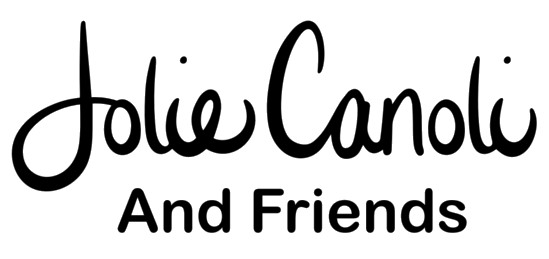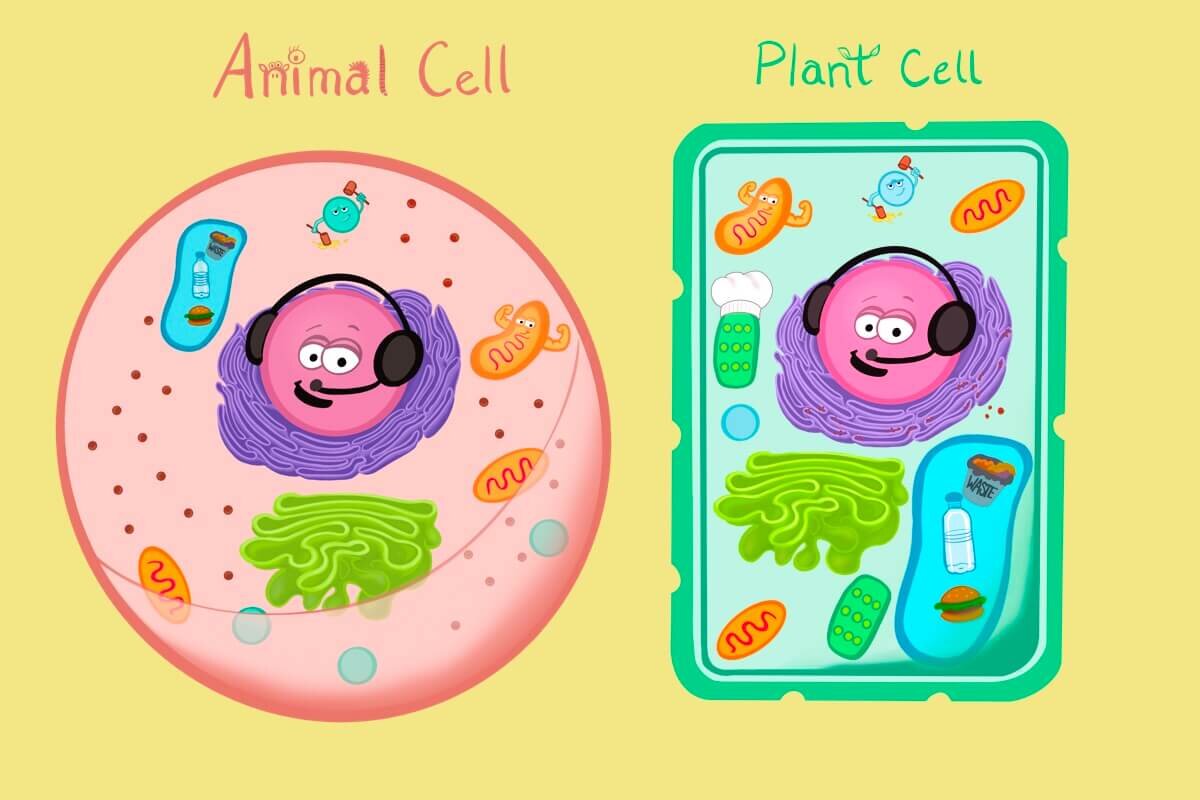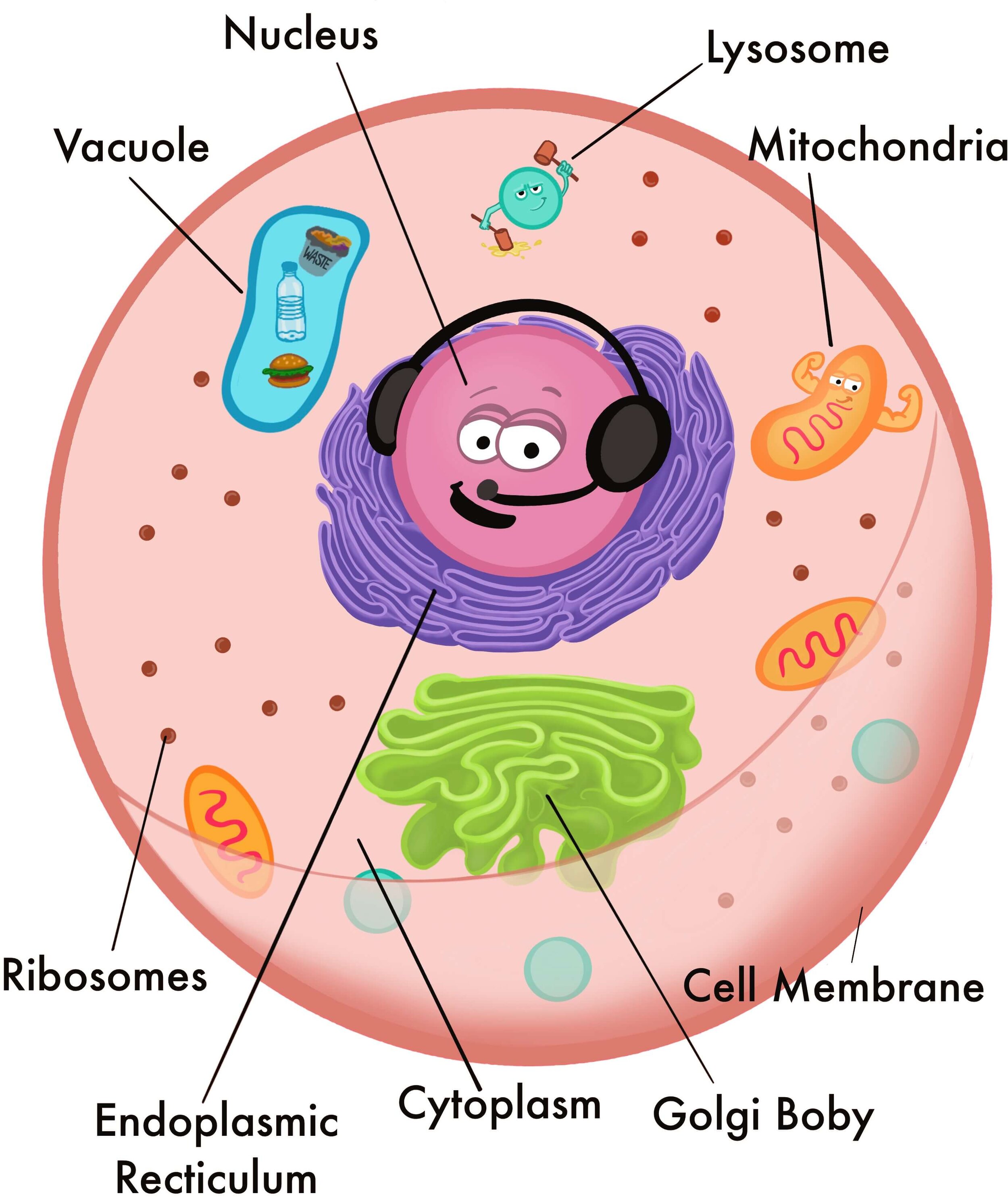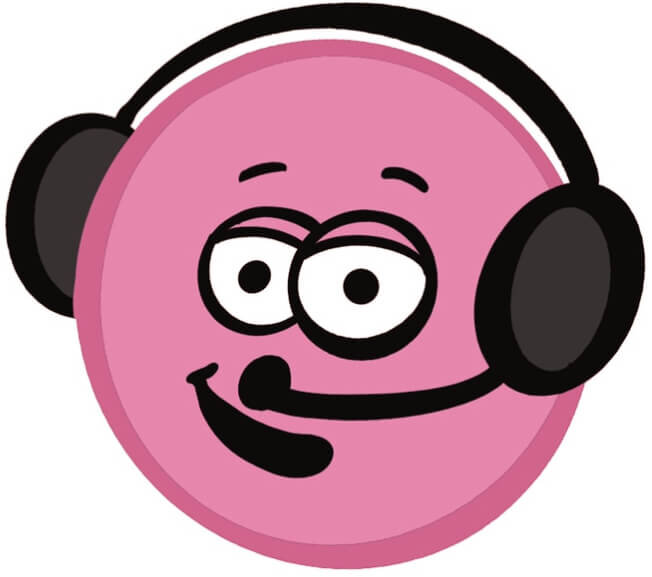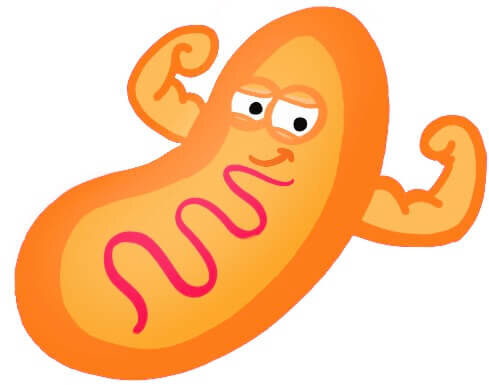I’ve created a full PDF that includes 2 mini posters, a quiz, memory gestures, and coloring sheets for review. You can find it below for $0.99, or subscribe and get your first pdf free.
Let’s learn about the different parts of a cell and what they do!
All living things have at least one cell. Cells are extremely tiny, and can only be seen in a microscope. Your body has around 30 trillion cells! It was once thought that cells were very simple. However now we know that cells are extremely amazing, complex things— in fact, some people compare cells to an entire city where different things work together. There are various kinds of cells, and in this lesson we will learn about the animal cell and the plant cell. Here are the main parts of the cell:
Cell membrane is the outer coating that surrounds the cell. It is kind of like our skin. It allows things to move through, keeps things out, and protects the cell.
Cytoplasm is like the goo where all organelles float inside the cell. Organelles are like mini organs. Just like you have a brain, heart, and lungs, cells have different parts that help it function. Main organelles of a cell are nucleus, golgi body, mitochondria, lysosomes, ribosomes, and endoplasmic reticulum.
Nucleus
Nucleus is the cell boss; some people call it the cell brain. It contains all the DNA information of the cell. The nucleus tells the cell what to do, what to make, and when to divide. It is responsible for growth, cell division, making proteins, and differentiation (making the cell different and unique). It stores the mRNA, which are like messengers that communicate with the cell to tell the different parts what to do.
Golgi Body (also called Golgi apparatus) is kind of like a shipment center. It processes proteins and lipid molecules into packages called vesicles, and then transports them within and outside the cell. The Golgi body also creates lysosomes.
Lysosome
Lysosomes break down or recycle excess or worn out cell parts. There are often hundreds of lysosomes in a cell.
Mitochondria
Mitochondrion are the cell power makers. A mitochondria generates chemical energy to power the cell’s life giving chemical reactions.
Endoplasmic Reticulum
Endoplasmic Reticulum (ER) mainly transports proteins. The smooth ER contains ribosomes that make the proteins. The endoplasmic reticulum then transports the proteins throughout the cell.
Ribosomes are protein makers. They are also cell organelles, but they are much tinier than the others. The ribosomes that float around in the cytoplasm make proteins for within the cell, and the ribosomes on the endoplasmic reticulum make proteins for outside the cell.
Vacuole
Vacuole is a place where the cell stores food, water, and waste. Plant cells usually have one or more large vacuoles. If animal cells have vacuoles, they are usually small.
Plant Cells
Plant cells have two things that animal cells do not— a cell wall and chloroplasts.
Cell walls help provide structure and protection for plant cells. It also works to filter things that come in and out of the cell. It is a thicker outer coating around the cell membrane.
Chloroplasts help plant cells make food. Animal cells don’t make their own food, but plant cells do, so they need chloroplasts to help with the process of photosynthesis.
Cells are incredibly complex and wondrous! Some living things are made of only one cell, and some of trillions, but all living things are made of these incredible teeny tiny wondrous building blocks of life.
Or buy the Biology book!
Jolie Canoli Life Science workbook is packed with playful illustrations, easy to understand science lessons, playful quizzes, and educational activities. Perfect for elementary students studying Biology and Botany.
